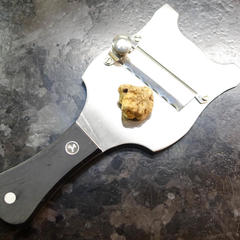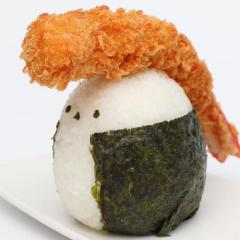Search the Community
Showing results for tags 'Troubleshooting'.
-
Having experienced the "Edible Balloon" dessert at Alinea, I have been on a quest to try this at home. Only recently was I able to find purportedly a recipe: https://www.buzzfeed.com/raypajar1/these-edible-helium-balloons-are-dessert-from-the-future?utm_term=.ut6r3PnMk#.acGNVWmd6 the video of which is found below. I tried this and probably no surprise, it failed. The bubble collapsed / popped with only a little distension. I wasn't sure if the problem was that a "secret" ingredient (e.g. some kind of surfactant to stabilise the bubble or using a different kind of sugar) was missing. Or maybe I didn't allow the mix to come to correct temperature etc. Elsewhere I thought I had read that the original recipe was in effect some kind of taffy. Has anyone else had success, or do any candy makers /modernist chefs, have suggestions they are willing to share?
- 13 replies
-
- Modernist
- Troubleshooting
-
(and 1 more)
Tagged with:
-
I was making onion confit the other day. After slow-cooking the onions in duck fat and duck stock for 14 hr., I wanted to reduce the liquid before finishing the onions off in the oven. So I got out a bowl and a sieve and took the inner container out of the IP to make it easier to pour. Then I got distracted talking to my wife, not that I'm blaming her. The next thing I noticed was liquid all over the counter: I had put the sieve on the IP and strained the onions into it. (Fortunately, it was cool and unplugged). Now, the IP documentation warns against immersing the IP in liquid. "The housing has electronic components and should never be immerse [sic] in water.Doing so will damage Instant Pot permanently. The housing can only be wiped clean." (http://instantpot.com/portfolio-item/after-purchase/#toggle-id-20). I was therefore wary about just plugging the IP in again, but didn't want to just throw it away. So I had to investigate. Removing the bottom plate was easy (one screw to undo), and inside it actually looked pretty good. The control board was clean and there were just a few splashes of grease here and there. The inner pot has two drainage holes; one is just visible at about 1:30 in this pic and the other is below the control board and not really visible in this pic. The back of the control board is protected by a plastic base. But I wanted to check the back of the board, and to do that I had to remove a few screws and connectors: Most of the connectors have little flanges that hold them in their sockets. Getting them to release required a lot of probing with a very small screw-driver, accompanied by a fair amount of swearing. Below is the multi-pin connector, which was the hardest to remove. Once that was off, the control board could be removed without disconnecting any more wires (which had proved recalcitrant, in any case). The back of the control board was clean, as was the inside of its plastic base, which I removed next. The back of it was coated in duck fat. Finally, I removed the plastic ring around the base of the IP. It housed the socket for one end of the power cord, but this snapped out easily. All the plastic pieces I had removed got a good wash in hot soapy water. I cleaned up the rest of the hardware as best I could with paper towels and cotton swabs. Then I put it all back together (thanking myself for having taken that initial pic). I replaced the inner pot, added some water and ran the "sauté" function for a couple of minutes until the water started to steam. Then I turned it off, put on the lid and ran a "soup" function with pressure for 5 min. There was a bit of smoke that I attributed to residual duck fat (It smelled culinary.), and which only lasted 15 sec. or so. Huge sigh of relief. Having gone through all this, I think it was probably not absolutely necessary, but there might have been a bit more smoke and smell. It was worth doing for the peace of mind, though. And the onion confit turned out fine.
-
Hi, I've tried to make the spherical mussels recipe from the Modernist Cuisine books and it didn't work as I expected, so I would appreciate any advice that may help here. The recipe calls for calcium gluconate which I couldn't get hold of, so I replaced it with calcium lactate gluconate that I had at home. I used the same ration (2.5%) When I tried to create the spheres in the sodium alginate bath I encountered two main problems; 1. instead of spheres the mixture just stayed as uneven shape on the surface. The bath was 1Kg. water with 5gr. sodium alginate and I let it rest in the fridge for 24 hours before using it so I think the problem is not here. However, the mussels jus mixture (100gr. mussels jus, 0.5gr. xanthin gum and and 2.5gr. calcium lactate gluconate) had a lot of air bubbles in it. Can that be the issue? 2. In the book the spheres seem to be completely transparent whereas my mussels jus mixture was pretty white and opaque. Is it because I replaced calcium gluconate with calcium lactate gluconate? Or maybe it's because the jus itself should be clarified before it is used? Thanks in advance for your support, Tom.
-
(1) I have a Miele Induction cooktop and a recently purchased Lodge Cast Iron 12 inch skillet. I have been poring over recipes from Cooks Illustrated and many of them recommend pre-heating the skillet in a 500F oven and then placing the skillet on a cooktop (no mention of glass cooktop or induction). Before I go ahead and try this, am I running the risk of damaging the cooktop by placing a pre-heated CI skillet on to the (Schott Ceran) surface? (2) A related question is that, on admittedly little use of the Lodge CI so far, I have triggered the overheating feature of the induction cooktop resulting in the burner in use shutting off. I have not used the burner any higher than 7 out of 9 and even then and for about five minutes for pre-heating. This is frustrating to say the least. I have had the same problem with a new Matfer 12" carbon steel skillet while trying to season it.
-
I was cooking for a party last night at which a gluten free cake was served for dessert. I had a few bites and aside from the cake being dry and the frosting very sweet, there was that tell-tale grittiness that GF baked goods seem to have. This particular bakery uses a blend of millet, sorghum, tapioca and potato flours. I used some Bob's Red Mill GF flour to satisfy a customer request for GF shortbread and found the same grittiness - they use garbanzo bean flour, potato starch, whole grain white sorghum flour, tapioca flour and fava bean flour. Obviously some sacrifices of flavor and texture are made when trying to replicate the magic of gluten, but why can't these flour blends be softer? Can't they be milled more finely? Or is it just the way the particular starches or proteins in those other flours are felt on the tongue? It's like that chalky cold cooked rice texture, do you know what I mean? Why can't it be better? Almost every time I eat something made with substitute flours, it makes me sad and want to fix it.
- 14 replies
-
- 2
-

-
Hello! I was wondering if anyone on here has tried using an induction cooktop with confection making (caramels, fondant, marshmallows ect...). My stove has literally three settings, and the low setting still burns sugar and there is no such thing as maintaining any sort of "simmer". I was looking into getting a cooktop and buying some copper sugar pots and mauviel makes this thing that goes inbetween. I would love to hear any input into this idea or your experiences! ~Sarah
- 2 replies
-
- Chocolate
- Confections
-
(and 3 more)
Tagged with:
-
I am a Baker and Cake Decorator in India. India has a huge Vegetarian Population that does not even eat eggs/gelatin. So I am constantly looking at finding vegetarian options. Issue at Hand: Regular Butter Cream - American Butter Cream ( Icing Sugar 10X + Butter + Milk/Lemon Juice / Cream) is an option ..and a lot of decorators use this as it sets hard, and they also add shortening into it ..and I am like , Nope I can't eat that , much less serve it. Its too Sweet /Gritty and Crusts and just tasteless. It has also made sure that people in my country to completely throw out any butter cream cake . You say Butter Cream and they say - too Sweet/gritty. I have been successful in the last two years to break that impression by making European Meringue based butter cream - I love Swiss Meringue Butter Cream . It is smooth, just sweet enough , takes colour well, pipes well , and is mostly temperature stable. But I can't serve it to people who don't eat eggs. I have so far been making a substitute - Ermine/Rue/Cooked Butter Cream - a Flour + Milk+ Sugar custard (AKA Pastry Cream minus the eggs) and whipping butter into it. It tastes good - people like it ..nut its a misery to work with - will not hold shape , will not colour well , and most of all weeps and weeps some more when we chill the cakes. So I am looking for suggestions on finding a starch that will not weep when frozen in a custard? And my second approach is to move to Aqua Faba to build the meringue and make SMBC. The starch custard option is easy and economical and does not leave me with mountains of Chickpeas . would love to hear thoughts . Thanks
- 4 replies
-
- Vegetarian
- Dessert
-
(and 1 more)
Tagged with:
-
What is the best way to execute tamales as an appetizer in a restaurant? I'm looking at 7-10 minute ticket time. I can only think of pre-steaming the tamales and steaming or simmering in sauce to order. Does anyone have any experience with these in the professional kitchen?
-
Wouldn't you know it! We have a family wedding in a couple of weeks, and I've had a misfortune in the basement adding some extra humidity to the air. It won't be fixed before next weekend, which is when I need to have everything finished. Adding to the problem is a lot of rain. I made a batch of pizzelle, and within hours, they were soft. Since I don't want to have to redo again, does anyone know what the optimal percent of humidity should be in the air when baking cookies that need to stay crispy? I'm looking for an actual number, such as 40%, 30%, etc. If I need to get another dehumidifier, I will. Thanks in advance! AG
-
So I've been looking for the ultimate matcha brownies (technically blondies but it just doesn't have the same ring to it). I've made chewy and fudgy regular brownies, but I find white chocolate based blondies to be much trickier. I have made a few matcha brownie recipes in the past, but they all came out sad and cakey. So I have taken it upon myself to come up with my own recipe. My matcha brownies came out very moist and "fudgy" but not chewy. I'm thinking next time I should try using vegetable oil instead of butter and only dark brown sugar.
- 11 replies
-
Greetings, I've cooked several recipes from Keller's "Bouchon" the last couple of weeks, and have loved them all! At the moment (as in right this minute) I'm making the boeuf Bourguignon, and am a little confused about the red wine reduction. After reducing the wine, herbs, and veg for nearly an hour now, I'm nowhere near the consistancy of a glaze that Keller specifies. In fact, it looks mostly like the veg is on the receiving end of most of it. Is this how the recipe is meant to be? Can anybody tell me what kind of yield is expected? Any help would be appreciated. Thank you, kindly.
- 4 replies
-
- Cookbook
- Troubleshooting
-
(and 1 more)
Tagged with:
-
I've looked, but the search engine and I don't get on. I followed this recipe http://vst.to/SvrsUMj the result is dry and crumbly. Top notch ingredients went into the mix. I've only cut off a small piece to try it. Any ideas ? Thanks from a novice brownie baker....
-
I've had an idea flowing across my brain waves over the last few months. It's on every channel and I'm getting ready to pull the trigger. I'd like to try to braise a dish in my smoker. I am thinking of braising a rabbit, but the I'm not looking for guidance on the protein/ingredients, rather the technique. I turn to you, o internet, in hope you will tell me your secrets. Has anyone ever braised in their smoker before? I've done some research, but I haven't seen much on the "how to" for the technique. Here's my plan: - Brown the rabbits on skillet (stovetop) - Get the aromatics/other stuffz sweated browned, etc. - (MEANWHILE) Smoker heats up to 300-325 degrees. - Add stock to rabbit, bring to a simmer on the stove top. - Transfer to smoker, braise uncovered for 1-2 hours, then cover with foil to finish for as long as necessary. I've seen folks smoke and then braise, but I haven't seen much on the idea of braising something IN the smoker. I saw something on CookingwithMe.at about doing something similar with pork belly, but that's about it. All I know is that after using stock+drippings from a smoked turkey created this CRAZY MIND-BLOWING flavor, so I'm basing this a lot off that idea. -Franz
-
FOOD BRETHREN! I need some advice. I have one last piece of pork belly confit in the fridge. I brined these bad boys for about 5 days (brine included pink curing salt), vacuum sealed the squares of pork belly with lard and sous vide them at 158 F for 16 hours. I cooked this on 11/10/16 and its been in my refrigerator since. Here is the general recipe I followed, with some modifications based on my taste: https://www.chefsteps.com/activities/... The last piece is still vacuum sealed and submerged (mostly) in lard. Any visible pork only has contact with the bag. It's staring at me. And calling my name. I want to deep fry this sucker and have a little date night with the handsome devil I see in the mirror every morning, but the last thing I want is spoiled food. I can't find any conclusive information about how long pork confit lasts for. I've only seen references that duck confit or in general that the confit technique will last for months in the fridge. I have found no sources which directly addresses pork confit. Questions/Factors I'm Considering: - Does pork confit keep for as long as duck confit? - Does vacuum sealing have any effect on the length of preservation? - Does sous-vide cooking method affect the length of preservation? I know I am probably being a bit paranoid, but I thought I would do my due diligence before taking the plunge, so to speak. Any advice on these questions would be extremely helpful and appreciated! The Franzisaurus-Rex PS - you should totally make this if you are into sous vide, confit, food, or have any respect for the enjoyment of life. Flash-searing these things after cooking was OUT OF THIS WORLD.
-
Last week I wanted to try a recipe (for the first time) from a cookbook I've had for over 20 years. So I did just as the recipe instructed, even though after reading the recipe I felt like it wouldn't work properly - as it was written. But dutifully, I followed the many steps. The damn recipe took hours (fortunately, there was no rush), and when it was finally finished, it pretty much sucked. As a matter of fact, I didn't even give a taste to Significant Eater. Of course I should've known better, but I wanted to give the written instructions their shot. And then I thought of this video/essay from Jacques. Which is really what a "recipe" is about in a nutshell. http://www.pbs.org/video/2365717095/
-
I was just wondering if it would still be safe to make Turkey Soup from a turkey carcass that is 12 days old. The carcass is in a stainless steel pot in a commercial fridge. I sort of forgot about it, as it was in our second fridge.
-
The freezing liquid in the bowl of my Cuisinart 2 quart ice cream maker no longer freezes. It's about 20 years old; is this the inevitable destiny of all such freezing liquids? Everything else in my freezer is as hard as granite :o)
-
I want to leave my sourdough (itself, not baked loaves of sourdough bread) for a while (going abroad) but I do not want it to die, can I leave it in the freezer? do you have other ideas?
- 7 replies
-
- Bread
- Troubleshooting
-
(and 1 more)
Tagged with:
-
Hello, recently I tried to make filo pastry/ puff pastry sheets at home and tried with margarine and butter and they came out ok. I see these small unorganized bakeries near my house and they make stuffed puff pastry. To save cost I am sure they do not use butter ad also when I eat them, I cannot taste butter. I too want to try at home the same procedure but have no idea what they use. Can I try to make puff pastry sheets with oil, will it work. Pleas guide as to what all I can use Thanx
-
I'm frustrated! The restaurant kitchen has two gas convection ovens, a Wolf with a 6-burner top and a Viking with a French flat top top. The Wolf has long been the pastry oven and I've baked approximately a zillion things in it, including a few thousand French macarons. Unfortunately the Wolf has been out of commission and I'm left with the Viking. The cream puffs, brownies, and shortbread have been baking fine, but I've had two batches of French macaron with really poor foot development and some cracking on top. I made a batch today and gave at least a third of the shells to staff because of poor rise. I don't think I rushed the drying, they seemed appropriately skinned-over before baking. It's a nice sunny day and I've made plenty of macarons in the rain so I don't think it's the weather. The Viking seems like a moister heat when I open the oven, is it possible that one make of oven would create a more humid heat, or have I simply lost my macaron mojo? Help!
-
I live in Japan and I've started on Japanese cooking. I'm one of those people who likes to know why certain things are done and those answers aren't in any of the cooking blogs or books I've come across. For example, why cook black beans for eight or more hours in sugar? Around new years there's a very popular dish of sweetened black beans. I know the goal is to cook them so the skins don't burst, but up to half a day? What's more, most recipes add some of the sugar at the beginning. Were it rice, it would never cook. Does putting the sugar in the beans from the beginning slow the cooking? Does a prolonged cooking partially candy the beans? I'd really like to know, because I made a dish with Azuki beans the other day (zen-zai) and to keep the skins from bursting I cooked the soaked beans for over two hours before adding the sugar and some of the beans did burst. For reference, the recipes I followed flowed like this: 1) Soak the beans over night, change the water. 2) Bring to a boil with a bit of salt or soy sauce and some amount of sugar. 3) Reduce the heat to barely a simmer with a piece of parchment over the surface and let it boil until they're just tender -- at least eight hours. 4) Add 1/3 the amount of the remaining sugar, cook for another half an hour. Repeat. Repeat. 5) Add a bit more soy sauce. Done.










